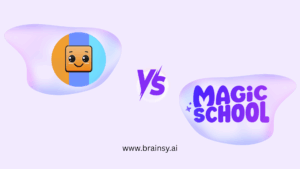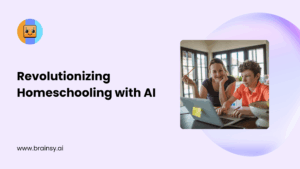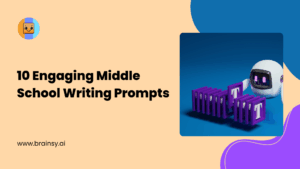In recent years, the educational landscape has undergone a significant transformation, largely driven by advancements in technology. Among these innovations, artificial intelligence (AI) has emerged as a pivotal force, reshaping how students learn and how educators teach. As we step into 2025, AI learning platforms are not just a trend; they represent a fundamental shift that is redefining K–12 education. This article explores the various dimensions of this transformation, highlighting key trends, benefits, and the role of platforms like Brainsy.ai in leading this change, with a focus on artificial intelligence in K-12 education and personalized learning systems.
The Evolution of Personalized Learning
Personalized learning is not a new concept; it has been part of educational discourse for decades. However, the integration of AI has taken it to unprecedented levels. Traditionally, education followed a standardized model where all students were expected to learn the same material at the same pace. This approach often left many students behind, unable to keep up with the curriculum or disengaged due to a lack of challenge.
The Shift Towards Individualized Learning
The advent of AI has enabled a more customized approach to education. By leveraging predictive analytics, AI systems can assess each student’s strengths, weaknesses, and learning preferences. This allows educators to tailor their teaching methods and materials to meet the unique needs of each learner. For instance, if a student excels in mathematics but struggles with reading comprehension, personalized learning software can recommend specific resources and exercises to help bridge that gap. Moreover, AI tools for teachers, such as brainsy and Flint, assist in automating administrative tasks like grading and lesson planning, enabling educators to focus more on individualized instruction and student engagement.
The Role of Data in Personalization
Student performance data plays a crucial role in the evolution of personalized learning. AI systems collect and analyze vast amounts of data from student interactions, assessments, and feedback. This data-driven approach not only helps in identifying learning patterns but also in predicting future performance. Educators can use these insights to make informed decisions about instructional strategies and interventions, creating a truly personalized learning experience.
Key Trends in AI Learning Platforms
As we look ahead to 2025, several key trends are shaping the landscape of AI-powered personalized learning in K–12 education.
1. Adaptive Learning Technologies
Adaptive learning technologies are at the forefront of this revolution. These AI-assisted learning tools adjust the difficulty level of content based on a student’s performance in real-time. For example, if a student demonstrates proficiency in a particular topic, the system will present more challenging material. Conversely, if a student struggles, the platform will provide additional support and resources. Dynamic content delivery and interactive simulations are becoming integral parts of these adaptive systems, enhancing student engagement and understanding.
2. Intelligent Tutoring Systems
Cognitive tutoring systems are another significant development in personalized learning. These AI-driven platforms simulate one-on-one tutoring experiences, offering tailored instruction and feedback. By analyzing a student’s responses, intelligent tutoring systems can adapt their teaching methods to suit individual learning styles, making education more engaging and effective. Some schools are even experimenting with the concept of one AI tutor per child to provide highly individualized support.
3. Gamification of Learning
Gamification is transforming the way students engage with educational content. AI enhances gamified learning experiences by adjusting challenges and rewards based on student progress. This approach not only motivates students but also fosters collaboration and problem-solving skills among peers. AI tutors and AI text to speech technologies are being integrated into these gamified environments, providing additional support and accessibility for diverse learners.
4. Real-Time Feedback Mechanisms
One of the most significant advantages of AI in education is the ability to provide real-time feedback. AI tools can instantly evaluate assignments and assessments, offering personalized feedback that helps students improve their understanding of the material. This immediate response is invaluable for both students and teachers, allowing for timely interventions when necessary.
Benefits of AI-Powered Personalized Learning
The integration of AI into personalized learning offers numerous benefits for students, educators, and educational institutions alike.
Enhanced Student Engagement
AI-powered personalized learning fosters greater student engagement by catering to individual interests and learning styles. When students feel that their unique needs are being addressed, they are more likely to participate actively in their education.
Improved Learning Outcomes
Research has shown that personalized learning can lead to improved academic performance. By providing tailored resources and support, AI helps students master concepts at their own pace, resulting in better retention and understanding of the material. This personalized approach has been successfully implemented in various personalized learning schools, showcasing impressive results.
Efficient Use of Educator Time
AI tools can alleviate some of the administrative burdens on educators, allowing them to focus more on teaching and less on grading and data analysis. With AI handling routine tasks, teachers can dedicate more time to interacting with students and providing personalized support.
Data-Driven Decision Making
The insights generated by AI-driven analytics empower educators to make data-driven decisions. By understanding student performance trends, teachers can identify areas that require additional attention and adjust their instructional strategies accordingly. These data-driven insights are crucial for creating effective personalized curriculum design and implementing it in the classroom.
The Role of Brainsy.ai in Transforming Education
As AI continues to revolutionize K–12 education, platforms like Brainsy.ai are leading the charge. Brainsy.ai offers a comprehensive suite of personalized learning tools designed to enhance learning experiences for students and educators alike.
Innovative Features of Brainsy.ai
Brainsy.ai is a cutting-edge platform that leverages advanced AI algorithms to analyze student data, offering personalized recommendations tailored to each learner’s needs. As a leader in AI for students, its adaptive learning system dynamically adjusts content based on individual progress, ensuring that every student receives the support necessary to thrive. By integrating natural language processing and virtual assistants, Brainsy.ai creates an interactive and engaging educational environment, making learning more effective and personalized for students
Supporting Educators
In addition to benefiting students, Brainsy.ai also supports educators by providing valuable insights into student performance. Teachers can access detailed reports that highlight areas of strength and weakness, enabling them to tailor their instruction effectively. This personalized learning solution helps educators create individualized lesson plans and implement targeted interventions.
Fostering Collaboration
Brainsy.ai promotes collaboration among students by incorporating social learning features. Students can work together on projects, share resources, and engage in discussions, fostering a sense of community within the learning environment.
Challenges and Considerations
While the benefits of AI learning platforms are significant, there are also challenges and considerations that educators and institutions must address.
Data Privacy and Security
As AI systems collect and analyze student data, concerns about privacy and security arise. Educational institutions must implement robust data protection measures to ensure that student information is kept confidential and secure.
Equity in Access
Another challenge is ensuring equitable access to AI-powered learning tools. Not all students have the same access to technology, and disparities in resources can exacerbate existing inequalities in education. It is crucial for schools to address these disparities and bridge the digital gap to ensure that all students can benefit from personalized learning.
Teacher Training and Support
For AI learning platforms to be effective, educators must be adequately trained to use these tools. Professional development programs should focus on equipping teachers with the skills and knowledge needed to integrate AI into their teaching practices effectively.
Algorithmic Bias
As with any AI system, there is a risk of algorithmic bias in personalized learning platforms. It’s essential to regularly audit and refine these systems to ensure they are fair and unbiased in their recommendations and assessments.
The Future of AI in K–12 Education
Continuous Improvement of AI Algorithms
AI algorithms will continue to improve, becoming more sophisticated in their ability to analyze data and predict student performance. This will lead to even more accurate recommendations and personalized learning pathways for students.
Integration with Other Technologies
The integration of AI with other emerging technologies, such as virtual reality (VR) and augmented reality (AR), will create immersive learning experiences that further engage students. These technologies can provide hands-on learning opportunities that complement traditional instruction.
Global Collaboration
As AI learning platforms become more widespread, we can expect increased collaboration among educational institutions worldwide. Sharing best practices and resources will help educators leverage AI effectively, ultimately benefiting students across the globe.
Conclusion
AI learning platforms are revolutionizing K–12 education in 2025, offering tailored experiences that cater to the unique needs of each student. With platforms like Brainsy.ai leading the way, educators are equipped with the tools and insights necessary to enhance learning outcomes and foster student engagement. While challenges remain, the potential for AI to transform education is immense, paving the way for a more inclusive and effective learning environment for all students.






